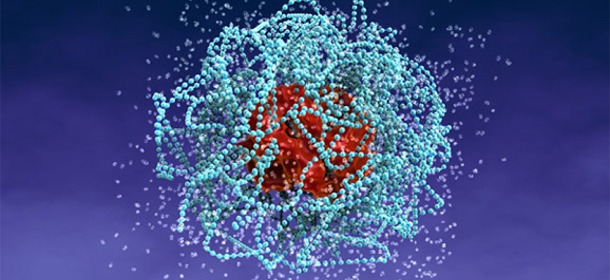Featured
Statin Damage Hidden with Diagnosis Called an ‘Aging Disease’
What happens when a favored drug commonly causes a painful and potential fatal disease? In the case of statins, they’ve renamed their muscle damage as an age-related disease called polymyalgia rheumatica.
When doctors want to continue prescribing a drug that causes widespread and potentially deadly harm, denying or hiding that harm often becomes the primary focus. In the case of statins, the most widespread harm is rhabdomyolysis, widespread and painful breakdown of muscle. So now, they have a diagnosis for that. It’s polymyalgia rheumatica, which is simply renaming “muscle pain flux” so it sounds scientific. Clever, no?
Statins are doing harm to enormous numbers of people, mostly those over age 50, because they’re the ones who are routinely prescribed these poisons. Oddly enough, polymyalgia rheumatica is a disease almost exclusively of people over age 50! Imagine that!
Of course, giving a name to this pseudo disease gives it credence. Since there’s no officially-known cause for polymyalgia rheumatica, it can be referred to as just “one of those unfortunate things about aging. Oh, it first showed up after you started taking statins? Oh well, that’s just a coincidence. Don’t you stop taking your stain pill. You don’t want a heart attack, do you?”
But now that there’s a “diagnosis” for muscle pain, even though its cause is “unknown”, doctors—and Big Pharma, of course—have yet another excuse to prescribe yet more toxic drugs. A new diagnosis creates a new need. So, of course, what drugs do they choose to give? Why, some of the very worst, of course: steroids. They’re so dangerous, they guarantee repeat business, because people taking them must be closely watched in case the drugs cause even more harm.
One must wonder what alternative names they’ll find for statin-induced liver damage? Detrimentum hepatia? Will erectile dysfunction become mutunium defloresco?
Lest anyone suggest that no one has demonstrated an association between polymyalgia rheumatica and statins … well, the fact is that the connection has been made in a couple of scientific studies1,2.
As Sayer Ji of GreenMedInfo notes:
Research like this reveals a likely possibility, namely, that the well-known muscle soreness (myalgia) and inflammation (myositis) associated with statin drugs is far from a rare “side effect” and is likely universally present, the difference being only the degree to which the damage and subsequent adverse effects are experienced. So, instead of calling statin-induced muscle damage by its proper name, the medical establishment projects a “new syndrome,” dressed up in Greek, onto the symptom picture3.
Natural Alternatives
Since there are many natural ways to treat high cholesterol—assuming you buy into the whole concept of high cholesterol being bad, a link made by assumptions and some very bad pseudo science—you might want to consider treating it naturally. There truly are natural methods that provide results at least as good as statins, but without the adverse effects.
The very first thing you can do is eliminate all prepared foods. Most of them are full of toxic junk that could have been designed to cause diabetes and heart disease. That’s one straightforward step that could, all by itself, return you to good health—and in the process, result in lowering cholesterol.
Take up exercise. It’s one of the very best things for general health and heart health in particular. And it doesn’t have to cost anything!
Then, there are specific foods, herbs, and extracts that help lower cholesterol, though Gaia Health would suggest that cholesterol-lowering is merely a side effect of better overall health. These include:
- Chocolate with little or no sugar or other sweeteners (except for stevia).
- Coconut water.
- Policosanol, an extract of sugar cane.
- Red yeast rice.
- Fiber.
- Curcumin.
- Pistachios.
- Artichokes.
- Oats.
- Beta-glucan.
Check out GreenMedInfo’s page listing foods for a more complete list of reducing high cholesterol.
Rather than trying to trick your body into lowering cholesterol, which is merely a marker for ill health, not its cause, why not just change your diet, focus on eating or taking a few “cholesterol lowering” foods, and exercise? You’ll feel ever so much better—and your health will thank you for it.
This article is produced with particular thanks to Sayer Ji’s article, A New Greek Name for Statin Toxicity: Polymyalgia Rheumatica.
Sources:
- 1Statin-Associated Polymyalgia Rheumatica. An Analysis Using WHO Global Individual Case Safety Database: A Case/Non-Case Approach
- 2Polymyalgia, hypersensitivity pneumonitis and other reactions in patients receiving HMG-CoA reductase inhibitors: a report of ten cases.
- 3A New Greek Name for Statin Toxicity: Polymyalgia Rheumatica
Tagged big pharma, conventional medicine, modern medicine, muscle pain, muscle pain aging, pharmaceutical drugs, pharmaceuticals, polymyalgia rheumatica, polymyalgia rheumatica statins, rhadomyolysis, statins, statins muscle pain
Related Posts
-
http://www.lowcholesteroldiet-plan.com/ Cindy Palin – Dietitian
















